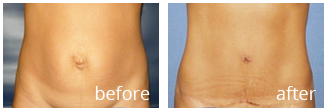Let's Keep in Touch
Sign up now for our email list and you'll get first dibs on the latest news and special offers from Dr.Perry Jr. Rest assured, we never share your email info.Eyelid Lift
Eyelid surgery is also called blepharoplasty. This involves removing of fat usually along with excess skin and muscle from the upper and lower eyelids. Eyelid surgery can correct drooping upper lids and puffy bags below your eyes. Features that make you look older and more tired than you feel, and may even interfere with your vision. This procedure doesn’t involve crow’s feet or other wrinkles, eliminate dark circles under your eyes, or lift sagging eyebrows.


Eyelid Surgery Before and After Photos
Click here to visit our Eyelid Surgery before and after photo gallery
The evidence of your ethnic or racial heritage cannot be erased.
Candidate suitable for eyelid surgery:
Blepharoplasty can enhance your looks and give your self confidence but won’t make you look entirely different. So be realistic in your expectations.
- The best candidates for eyelid surgery are men and women who are physically healthy, psychologically stable.
- Most are 35 or older.
- If droopy, baggy eyelids run in your family, you may decide to have eyelid surgery at younger age.
- The medical conditions which make blepharoplasty more risky are thyroid problems such as hypothyroidism and graves’ diseases, dry eye or lack of sufficient tears, high blood pressure or other circulatory disorders, cardiovascular disease.
- If you have a detached retina or glaucoma. Check with your ophthalmologist before you have surgery.
Risks following the surgery:
When eyelid surgery is performed by a qualified plastic surgeon, complications are infrequent and usually minor. But you should always expect risks and discuss with Dr. Perry Jr. about the pros and cons involved.
- The minor complications after the surgery include double or blurred vision for a few days.
- Temporary swelling at the corner of the eyelids.
- A slight asymmetry in healing or scarring.
- Tiny whiteheads may appear after your stitches are taken out, which can be removed easily with a very fine needle.
- Following surgery, some patients may have difficulty closing their eyes when they sleep.
- In rare cases this condition may be permanent.
- Another complication is ectropion, a pulling down of the lower lids which may require further surgery.
Pre-surgery planning:
The initial planning with Dr. Perry Jr. is very important. He will need your complete medical history. Be sure to inform your surgeon of any previous diseases, allergies and if you are a smoker.
- An eye test may be done to test vision.
- Most insurance policies don’t cover eyelid surgery, unless you can prove that, drooping upper lids interfere with our vision.
- Clear all doubts before the surgery.
The surgery:
The surgery is usually done on an out patient basis and does not require an in patient stay.
- Eyelid surgery is usually performed under conscious sedation with local anesthesia, which numbs the area around their eyes.
- During the surgery you will be in a state oi>
- In very few cases general anesthesia is used.
Pre-surgery planning:
Blepharoplasty may take one to three hours. For this procedure, the surgeon makes incisions following the natural lines of your eyelids; in the creases of your upper lids, and just below the lashes in your lower lids. The incisions can extend into the crow’s feet or laugh lines at the outer corners of your eyes.
If you have a pocket of fat beneath your lower eyelids but dont need to have any skin removed, your surgeon may perform a transconjunctival blepharoplasty. In this procedure the incision is made inside your lower eyelids, leaving no visible scar. It is usually performed on younger patients with thicker, more elastic skin.
Care after the surgery:
- Dr. Perry Jr. will instruct you to keep your head elevated for several days.
- Cold compression bandages are used to reduce swelling and bruising.
- This lasts between several weeks to a month.
- Doctors recommend eye ointment and eye drops since your eyelids may feel dry at first and your eyes may burn or itch.
- For the first few weeks you may also experience excessive sensitivity to light.
- Temporary changes in your eyesight, such as blurring or double vision.
- Once the stitches are removed the swelling and discoloration around your eyes will gradually subside.
Getting back to normal:
- As you may be sensitive to sunlight, wind, and other irritants for several weeks, you should wear sunglasses.
- Take it easy for five days or so and avoid activities that tire you easily for three weeks.
- Scars will take time to fade.


